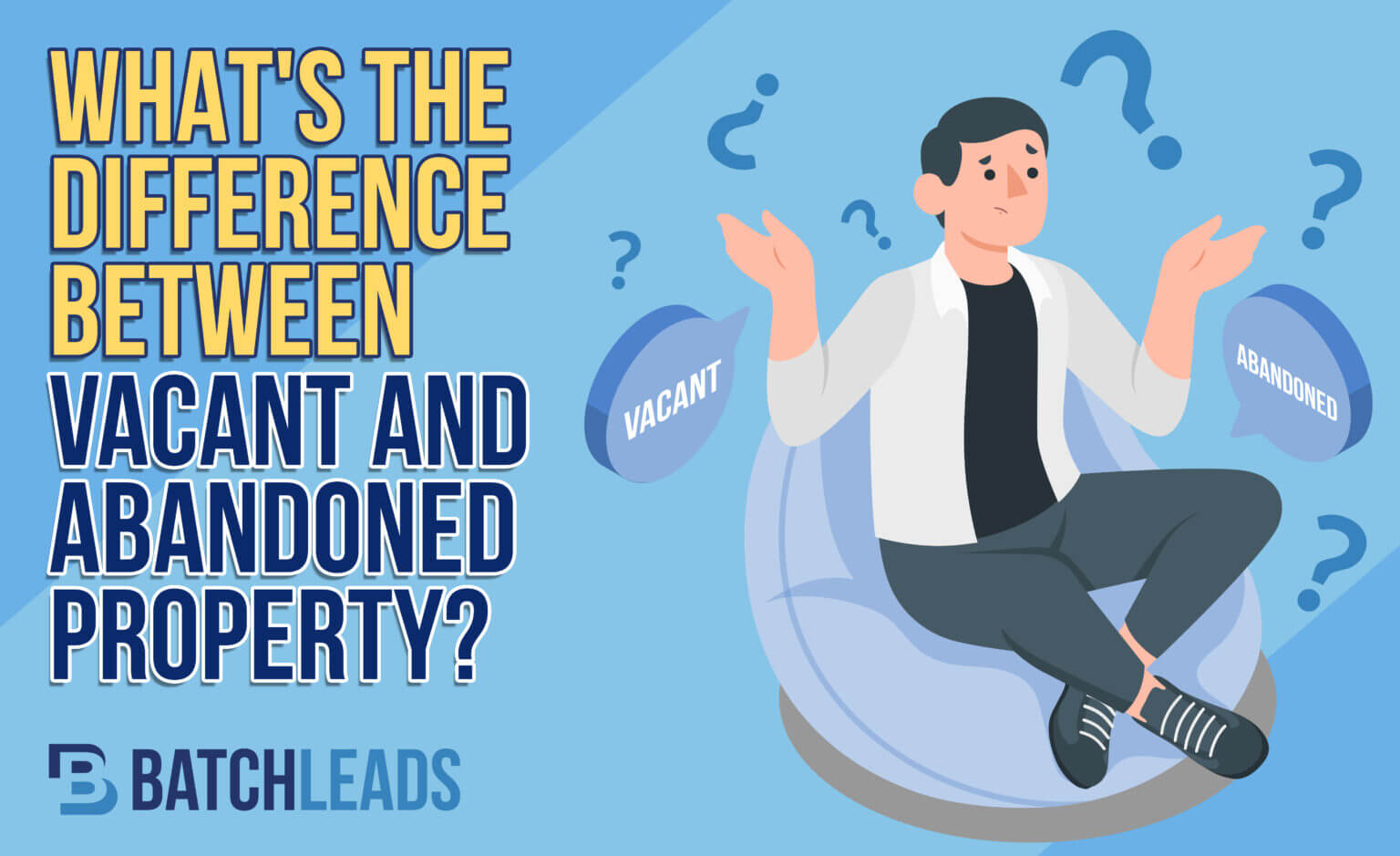Looking for leads on potential investment properties? Homes and structures can be labeled with different designations, and it’s essential to understand the differences so you know what to expect with each project.
Have you ever driven by a house that looks like no one has mowed the lawn in years? You might be looking at a vacant or abandoned property, and these investments can pay hefty dividends. But it’s important to start by understanding the nuances so you can make smart financial decisions and broker great deals..
What is a Vacant Property?
The USPS officially designates a piece of property as vacant when mail hasn’t been picked up for over 90 days or when the property is no longer being lived in. While not all USPS-designated vacant properties are empty, it’s an excellent first step toward finding that diamond in the rough for flippers, investors, and wholesalers alike.
A property may be vacant for many reasons, including the following:
- It is an empty plot of land not currently in use or being built on.
- It has been foreclosed on and the occupant/s has been evicted, but the deed has yet to be transferred back to the bank or lender.
- The resident has vacated it, and it no longer contains personal property or belongings.
- It is a vacation home in seasonal disuse (Depending on local laws and ordinances this may merely be considered unoccupied).
What is an Abandoned Property?
Abandoned properties are empty and unused properties that have been put on an official list of abandoned properties because they’ve met specific criteria. To start with, they need to be vacant (or not legally occupied) for six months or more. While local regulations may differ, the common law specifies certain qualifying factors.
Criteria for abandoned property include the following:
- There has been no construction in the six months of unoccupied time.
- The property is considered a public nuisance or safety hazard.
- Quarterly taxes have not been paid on the property.
- The home is considered in disrepair or needing rehabilitation.
What’s the Difference Between Vacant and Abandoned Property?
The distinction between vacant and abandoned property is subtle but essential. While it takes little time or effort for a property to be labeled vacant, inclusion on a list of abandoned properties is a legal process that indicates a property is in an extreme state of disrepair.
A building must first be labeled vacant before it can be considered abandoned. Commonly, an abandoned property is unlikely to be repaired: it might have extensive fire damage or it might be located on land already planned for future development.
Key Takeaways
Vacant and abandoned properties can be great investment options. Not only are they a path to ownership in a desirable city or neighborhood, but you can also often buy them at a deep discount. Just remember to calculate your after-repair value (ARV) and check state and local laws so you have a clear understanding of the closing process.
Once you buy your vacant or abandoned property, get to work making those repairs so you can start profiting from your investment. Whether you decide to rent it or flip it, you’ll have a great paycheck coming your way!



